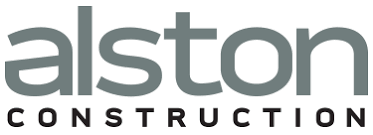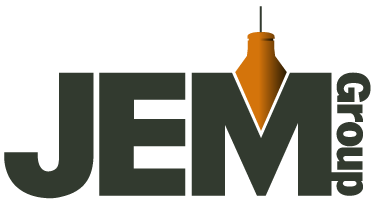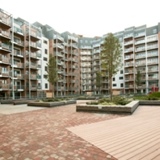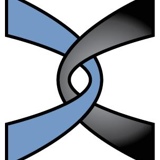Title Page
-
Site conducted
-
Conducted on
-
Prepared by
-
Location
-
PROJECT NAME AND NUMBER
-
PROJECT MANAGERS NAME
-
SUPERINTENDENTS NAME
A. GENERAL ADMINISTRATIVE
-
1) Written Safety and Hazard Communication programs (IIPP and SDS Binders)
-
2) Required postings OSHA, Emergency Numbers, Worker’s Comp, Crisis, and Code of Safe Practices<br>
-
3) SWPP Plan on site & up to date<br>
-
4) Weekly Safety Meetings & Inspections (in prolog?)<br>
-
5) First Aid Kit on site and stocked<br>
-
6) Safe Start and Safety Orientations<br>
B. PERSONAL PROTECTIVE EQUIPMENT
-
1) 100 % Hard hats, safety glasses and reflective vests<br>
-
2) Proper work attire (shirts w/ sleeves, no shorts, leather boots, no tennis shoes<br>
-
3) Hearing Protection Available<br>
-
4) Fire Extinguisher(s) Available<br>
-
5) Respiratory Protection when required<br>
-
6) Hand protection (gloves when required)<br>
C. EXCAVATION EXCAVATION
-
1) Soil Classification done by Competent Person<br>
-
2) Protective measures for all excavations over 5 ft deep (Washington 4ft deep) (sloping, benching or shoring<br>
-
3) Spoil at least 2 ft from edge<br>
-
4) Proper access for employees. Ladder when over 4ft in depth and available within 25 ft of workers<br>
-
5) No water, fissuring, falling spoils, etc<br>
-
6) Fall Protection used over 6 ft<br>
-
7) Confined Space issues properly addressed<br>
D. CONCRETE CONCRETE
-
1) Proper PPE during pour (Rubber boots, long sleeves, gloves, eye protection)<br>
-
2) Silica dust controls (respiratory protection)<br>
-
3) Rebar Caps<br>
E. CRANE SAFETY
-
1) 3rd party annual inspection provided<br>
-
2) Operator Certification (NCCO)<br>
-
3) Daily inspections performed<br>
-
4) Swing radius properly barricaded<br>
-
5) Slings and rigging inspected daily<br>
-
6) Outriggers properly positioned and supported<br>
-
7) Wind considerations made and manufacturer recommendations discussed<br>
F. HEAVY EQUIPMENT
-
1) Operators trained and certified<br>
-
2) Functioning Back-up alarms<br>
-
3) Daily inspections performed<br>
-
4) Seatbelts<br>
-
5) Clear visibility from Cab<br>
-
6) Proper clearance from other workers<br><br>
-
7) Forklift Operator trained and certified<br>
G. TOOLS
-
1) Power cords free from damage, have strain relief, all prongs intact<br>
-
2) Housing of tools in good condition<br>
-
3) Properly guarded<br>
O. POWDER ACTUATED TOOLS
-
1) Training and Certification<br>
-
2) Proper storage/disposal of charges<br>
-
3) PAT Warning signs in place<br>
P. FLOOR AND WALL OPENING
-
1) Covers/guardrails/barricades/tie off are on all openings 6 ft or higher above lower level<br>
-
2) Guardrails: Toprails- 200 lbs. Midrails- 150 lbs. Toeboards- 50lbs. Between 39-45 inches can't deflect more than 3" with 200 lb force<br>
-
3) Covers can support 2 times intended load<br>
-
4) Covers secured and marked HOLE or COVER<br>
-
5) Barricades 6' (Alston Requirement 15') or more around opening & anchors provided outside of barricade<br>
Q. WELDING AND CUTTING
-
1) Proper PPE<br>
-
2) Backflow valves on gas lines<br>
-
3) Separated by 20 ft or 1/2 hour fire wall <br>
-
4) Proper handling/labeling of cylinders<br>
-
5) Fire extinguisher near HOT WORK<br>
-
6) Other workers protected/warned from falling slag<br>
H. AERIAL LIFTS
-
1) Fall Protection used for articulating and reach platforms (Including Scissor Lifts)
-
2) Used from level surface<br>
-
3) Inspected for damage prior to use<br>
-
4) Operator properly trained<br>
-
5) Outside anchorage point being used when required<br>
I. HOUSEKEEPING
-
1) Work area, passageways, and stairs clear of scrap and debris. Cleaned daily<br>
-
2) Portable toilets accessible; cleaned and serviced regularly<br>
-
3) Material storage areas kept orderly and free from debris<br>
J. STAIRS AND WALKWAYS
-
1) Ladders used properly<br>
-
2) Handrails and guardrails installed<br>
-
3) Proper illumination<br>
-
4) No storage in stairways<br>
-
5) Emergency access available<br>
K. LADDERS
-
1) Step ladders must be open & locked when in use<br>
-
2) No workers standing on top 2 steps<br>
-
3) Ladders are set up on level surface<br>
-
4) Straight ladders set to 4:1 ratio<br>
-
5) Extend at least 3 ft above upper level and secured<br>
-
6) Free from damage. Broken ladders tagged out<br>
-
7) Non-conductive ladders near electrical<br>
L. FIRE PROTECTION/FLAMMABLE STORAGE
-
1) FE available every 75 ft from combustibles<br>
-
2) FE available within 50 ft of flammables<br>
-
3) FE available near HOT WORK<br>
-
4) FE visible with signage<br>
-
5) FE inspected monthly<br>
-
6) Flammable Material stored and labeled properly<br>
M. ELECTRICAL
-
1) All temporary electrical cords are protected by GFCI or assured grounding program<br>
-
2) Cords are properly rated for construction<br>
-
3) Cords are free from damage, have strain relief, and all prongs intact<br>
-
4) Panels are dead faced and contain all blanks<br>
-
5) Proper LOCKOUT/TAGOUT followed<br>
-
6) Breakers are properly labeled<br>
N. STEEL ERECTION
-
1) Fall Protection Plan submitted<br>
-
2) Steel Erection Plan submitted<br>
-
3) Fall Protection and Rigging daily inspections<br>
-
4) Other trades kept out of erection area<br>
-
5) Bracing of free standing steel<br>
-
6) All columns have 4 anchor bolts<br>
R. FALL PROTECTION
-
1) Workers tied off over 6 ft (4ft Washington)<br>
-
2) Have workers been provided proper FP Training<br>
-
3) Harnesses and lanyards in good condition<br>
-
4) Inspected before each use<br>
-
5) Anchorage points support 5000 lbs<br>
-
6) Fall Recovery Plan in place<br>
-
7) Roofer warning line erected 15 ft from edge<br>
-
8) Fall Protection Plan in place for roof edge work<br>
S. SCAFFOLDING
-
1) Competent Person overseeing erection, dismantling, movement & alterations.<br>
-
2) Inspected by competent person prior to start of each shift <br>
-
3) Fully planked and braced (OSHA Grade planking)<br>
-
4) Guardrails in place or fall protection used<br>
-
5) Proper ladders made available (no climbing of bracing allowed)<br>
-
6) No employees propelling themselves on top of rolling scaffold (no surfing). All wheels locked<br>
SCOPE OF WORK (Provide a summary of today's work activities)
-
undefined
-
Add media
"SAFETY OBSERVATIONS Each safety inspection must have a minimum of 5 observations (This can be a combination of Attaboys AND Deficiencies, but there must be at least one deficiency that you note and correct)."
-
undefined
-
Add media
CORRECTIVE ACTIONS (Enter corrective actions for any violations)
-
undefined
-
Add media
NOTES:
-
undefined
-
Person Conducting Safety Inspection Signature
-
Superintendent's Signature
-
Select date











